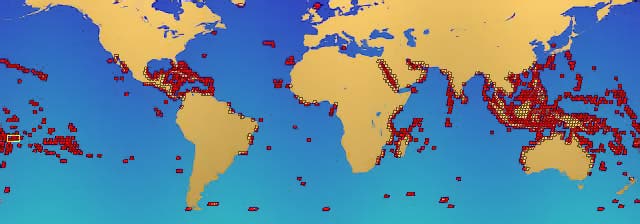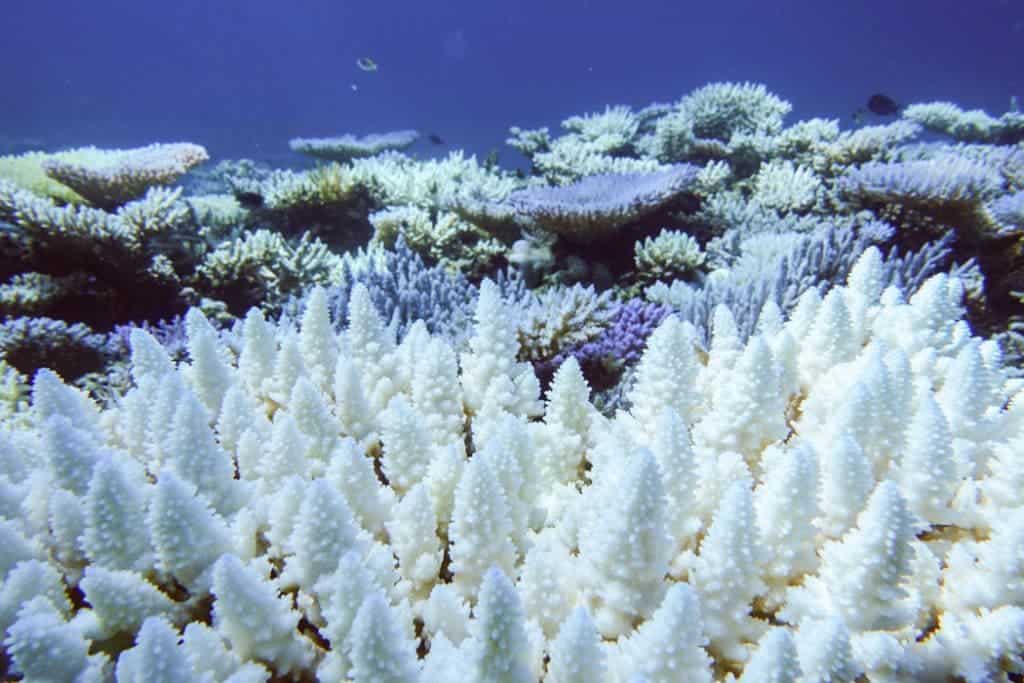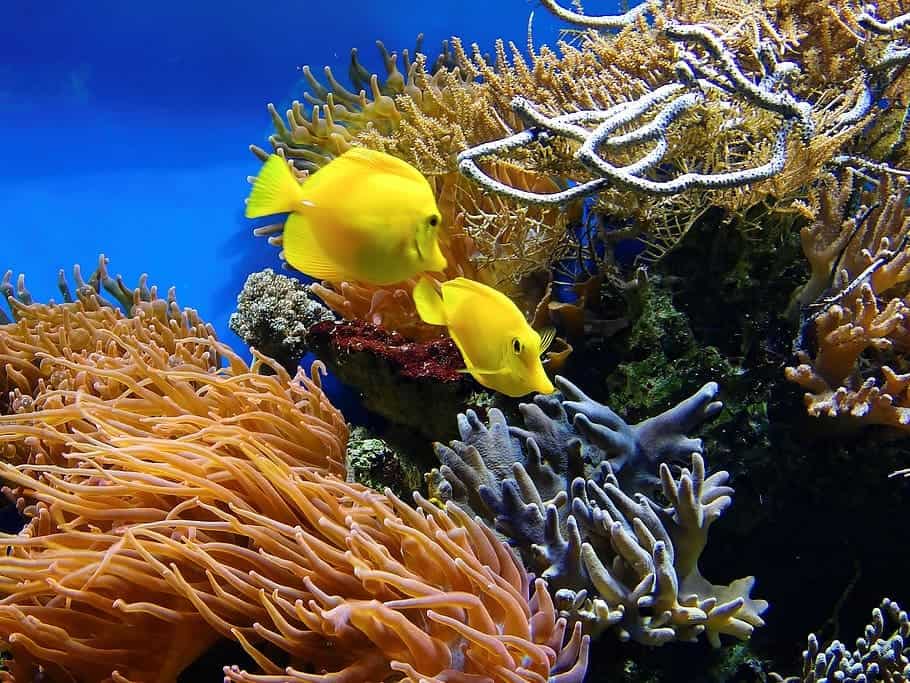Although few people have actually seen coral reefs, most of us are aware that they do exist — at least at some level. We know that somewhere in the sea, there are these large, magnificent structures called coral reefs. But after pretty pictures and vague ideas about their environment, our collective imagination usually stops.
In his book, Coral Reefs: Majestic Realms under the Sea, marine ecologist Peter F. Sale takes a deep dive into the world of coral reefs. Drawing from his own research and the work of others, Sale walks us through what we know about corals, how we know it, and (perhaps most importantly) why corals are under grave threat — because of human activity.

An eye-opening book
Corals and the reefs they produce are truly wonders of nature. But for all the mystery and unknown that still surround them, we know much more about corals than we did a few decades ago.
They’re animals, believe it or not, although they form compact and static colonies. A coral colony is essentially a myriad of genetically identical polyps — the same polyp clones itself again and again. Each polyp produces an exoskeleton near the base, and over many generations, this creates the skeletons we see in reefs. Corals can also breed sexually, which they often synchronize around the full moon.
Corals first emerged in the Cambrian, some 535 million years ago. But, as it turns out, they don’t always produce reefs. In fact, for the first hundred million years of their evolution, coral fossils are extremely rare, and they seemed to form large reefs only at certain times in their history, when the conditions were right.
When these conditions do happen, though, coral reefs are nothing short of amazing. Reefs are some of the most diverse and valuable ecosystems on Earth. They aren’t just a source of beauty and biological diversity — coral reefs provide countless environmental services that benefit coastal communities around the world. As Sale explains, they are the most valuable ecosystem on Earth, protecting coastlines from storm surges and erosion, and offering a safe haven for countless species. Many medicines have been derived from coral reefs, and in addition, they also provide important sources of income through tourism (although Sale makes a valuable point against turning ecosystems into economic commodities).
More than 500 million people worldwide depend on reefs for food, jobs, and coastal defense. If a coral reef is destroyed, the services it once provided will be reduced or eliminated, possibly forever.

What really makes Coral Reefs stand out is that corals are no longer distant, abstract things. The first-person narrative manages to make corals feel close, like the active part of our planet they really are. Which makes the threats corals are subjected to even more pressing.
Corals in the Anthropocene
Sale’s rich experience and obvious passion for marine environments alone make Coral Reefs worth reading, but what makes it enjoyable is the way he intertwines captivating reef stories with important science.
Sale concedes that most researchers don’t focus on storytelling — which coupled with social media and our fast-paced lifestyle, often makes a mess of science communication. But Coral Reefs does it right, and it tells a captivating story.
Rather than simply dwelling on the current plights of coral reefs (and there is a lot to dwell on), Sale starts off by explaining his relationship to coral reefs, his time and effort spent understanding and appreciate them. He makes us appreciate them too, not just as a pretty corner of nature, but as a thriving, complex, and unique environment. Then, just as you feel happy about two-thirds into the book, the problems start.

The main culprit is a familiar one: global warming. Local pollution also plays a role, but global warming poses a major threat to all coral reefs.
Corals have a mutualistic relationship with algae — a symbiosis. The coral provides the algae with a safe environment and compounds needed for photosynthesis, while in turn, the algae produce oxygen for the corals and help them remove waste. But when the water heats up, corals expel the algae, causing them to turn white. Corals can recover after this process (called coral bleaching) if temperatures cool down. But if the temperatures remain high for a long time, it can wreak havoc on reefs, killing them in no time.
Climate change has already killed 50% of the corals in the Great Barrier Reef, and 90% of the baby coral in the same place. By 2100, coral reefs might completely disappear due to climate change, and there’s no way to sugarcoat it: if emissions continue as they are now, it may spell the end of coral reefs as we know them.

So why don’t we do something about it? Is it because we don’t care enough, that we can’t do anything, or is the world simply not aware of this problem?
Sale draws from psychological science to identify the causes of inaction, and overcoming them won’t be easy. There are positive environmental stories in our recent history. The banning of DDT and the patching of the ozone layer are two such stories, but will coral reefs enjoy the same happy ending?
It’s a tough question to answer. Sale doesn’t attempt to tackle it head on, and instead, he asks another: why don’t coral reefs enjoy legal protection? Many single species do, the ozone layer does, even corporations have legal protection — why not coral reefs? They provide employment, jobs, and plenty of services to society, and protecting them has never been more important.
Protecting corals is an enormous challenge, but if we want to do it, this is the type of question we have to answer.
Peter F. Sale, a marine ecologist, is distinguished university professor emeritus at the University of Windsor, Canada. He most recently served as senior advisor and assistant director for coastal projects for the United Nations University’s Institute for Water, Environment and Health. He tweets as @PeterSale3. If you want to see more of Sale’s work, check out his website.


